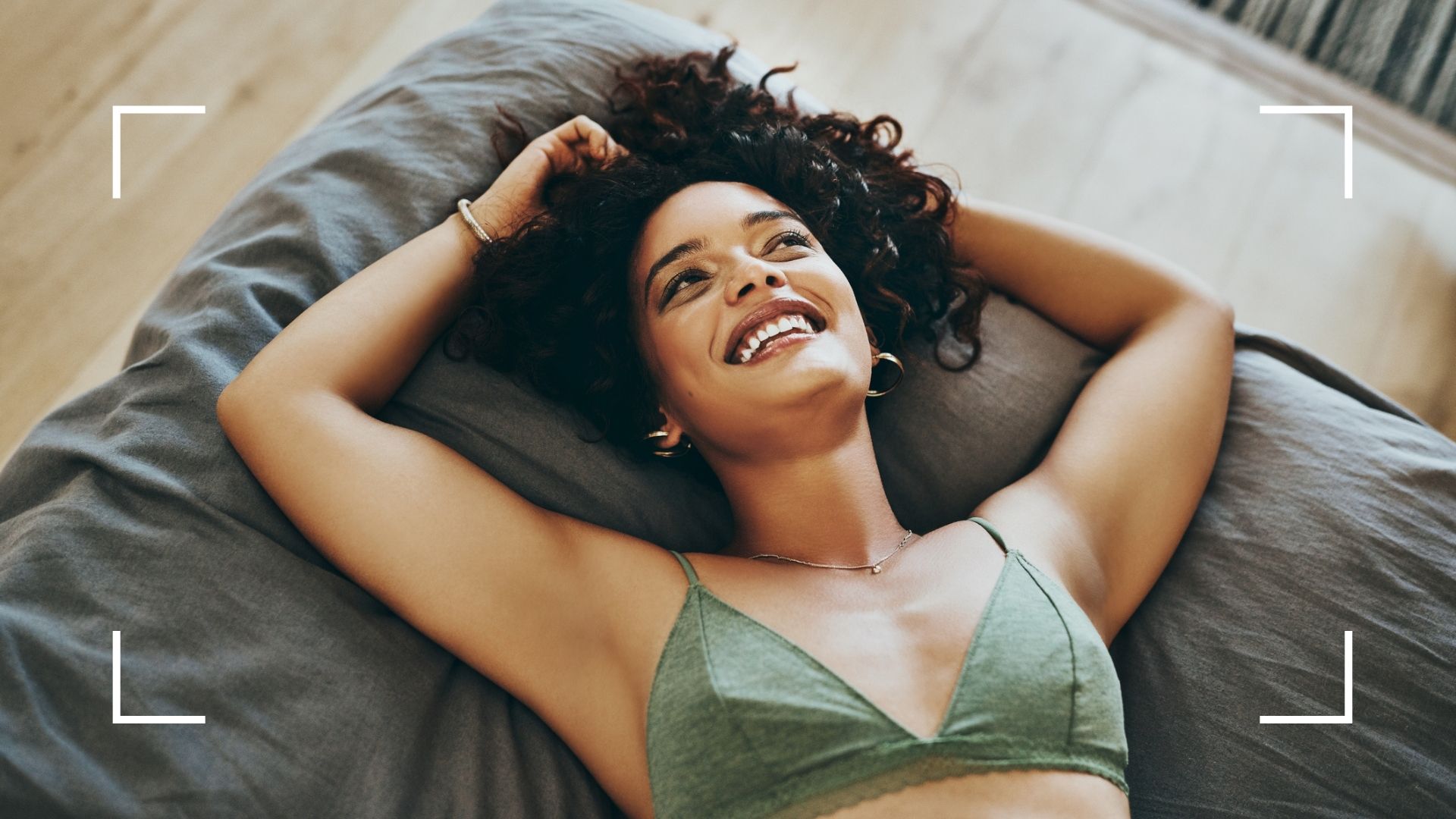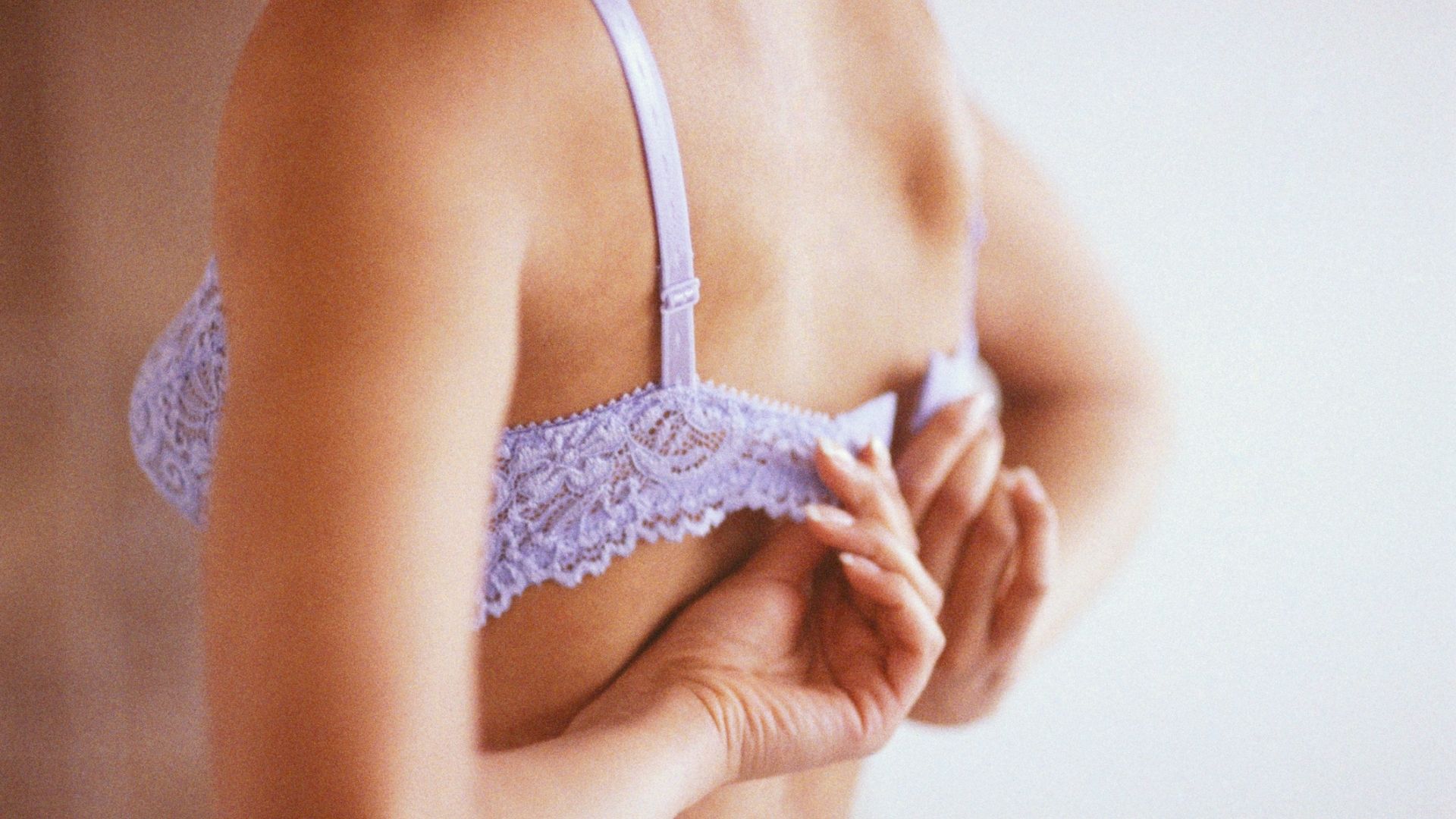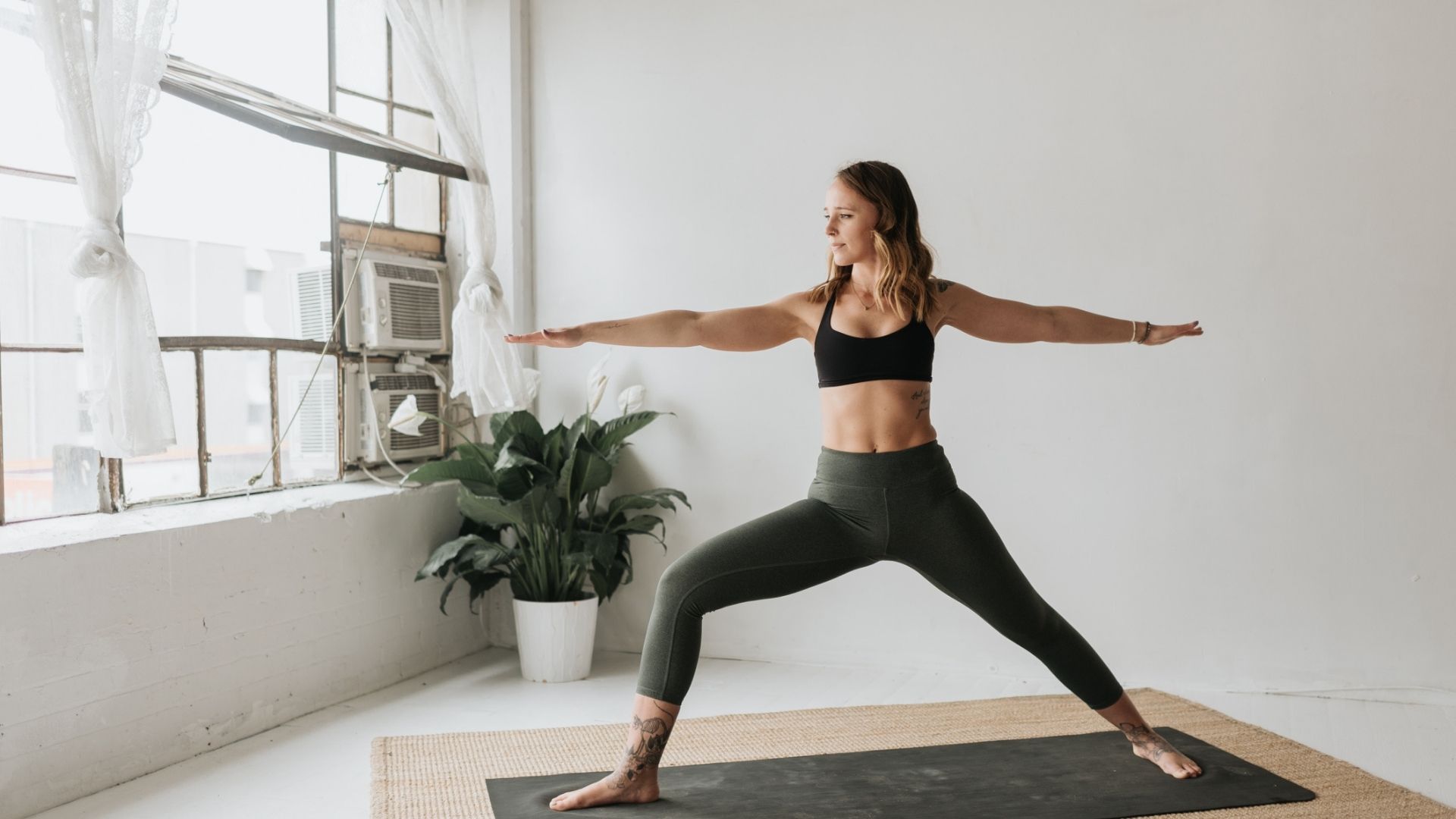Is it bad not to wear a bra? Here's the lowdown on what could happen to your cleavage
If you regularly work from home, the question 'is it bad not to wear a bra?' may have passed through your mind. Here's the answer...

The pandemic has triggered a shift towards dressing for comfort. As well as swapping your usual wardrobe for loungewear, perhaps you've also considered: is it bad not to wear a bra? After all, nothing can feel more liberating than freeing up your cleavage—whether you're working from home, or going about your daily business.
However, depending on your cup size, ditching lingerie entirely may not be the wisest idea. We've called on the experts to explain how wearing a bra can impact your body, whether strapping in can ward off premature sagging, and the instances when it might be healthiest to go without.
They also share what to consider when shopping for the best support. Because, like lipstick and heels, the options are endless—with the best bras totally individual to you. So, before you slip yours off, here's everything you need to know about the bras versus bralettes debate and how to go about supporting your cleavage in a way that puts your health and wellbeing first...
How does wearing a bra impact your body?

"The bra's main function is to support the weight and structure of the breast," explains Dr Ross Perry, medical director of Cosmedics. "Although it does depend on breast size, not wearing a bra could encourage women to slouch or slump and over time may contribute to back pain." Have an active lifestyle? "If you’re someone who exercises a lot—which can include walking for weight loss—then not wearing a bra will play havoc with back and neck muscles, as the body has to work harder to balance out the weight," he adds.
While going without a bra may be detrimental to your physical wellbeing, so can wearing the wrong one. "While you may be forgiven for thinking that wearing the incorrect bra size will only cause discomfort, there are actually a whole host of health issues that come along with ill-fitting underwear," notes Charlotte Davies, global design and buying director at lingerie brand Hunkemöller. "Back pain, bad posture, breast pain, abrasions to the body—and even premature sagging—are just some of the side effects you could experience when wearing a bra that’s not right for you."
Does wearing no bra cause sagging?
"Depending on the size, amount of fat and tissue, breasts can weigh up to 3kg," reveals Dr Hazim Sadideen, consultant plastic surgeon at the Cadogan Clinic. "When going braless, the weight of the breast has no external support. For smaller breasts with a tight skin envelope, this is unlikely to be a significant issue. However, in larger breasts with less integral support—meaning heavier breasts compounded by reduced skin elasticity and soft tissue support—this may cause them to sag to varying degrees.
"The amount of ptosis, or droop, is influenced by many factors such as breast volume, skin quality, pregnancy and breastfeeding, as well as hormonal or weight fluctuations. Within the breast, there are complex, intertwined anatomical features that define the overall shape, but there are also ligaments that provide structural integrity and connect the skin to the breast tissue. Changes in shape and sagging can be partly attributed to the attenuation of these ligaments." Which the best bras for large busts can help counteract.
Sign up to our free daily email for the latest royal and entertainment news, interesting opinion, expert advice on styling and beauty trends, and no-nonsense guides to the health and wellness questions you want answered.
As such, wearing a bra may help stop prematurely saggy boobs. "This is because the delicate connective tissue within the breast isn't stretched as much by movement throughout the day," explains cosmetic surgeon Dr Paul Banwell. Getting enough support is increasingly important with age. "As we get older, our skin becomes less elastic and thins, so gravity has an easier time pulling us down,” he adds. "Although, it's important to remember that the main reason for breasts sagging is age and not underwear choices."
Is it healthy not to wear a bra?

While wearing a bra can be useful, there are instances when going without—or opting for one of the best bralettes—may be more beneficial. "I don’t recommend wearing an underwired bra 24/7 as our breasts and the muscles need to be able to breathe," notes Dr Perry. "So while it may help with support, if it's too tight it can create pressure on the nerves, muscles and blood vessels around the shoulders, upper back and rib cage.
"Additionally, wearing bras that do not properly support your breasts or ones that are ill-fitting will force the muscles in your back and neck to perform double duty to hoist the extra weight, resulting in pain and even headaches." While there exist the best bras for small busts, going without a bra if you're on the lower cup size can be more comfortable and liberating. "But for women with larger breasts, the lack of support will only cause strain to the back," he warns. "High-impact workouts, like running or HIIT, can also do some serious damage to your breast tissue if not properly supported." Which is why getting your hands on one of the best high-impact sports bras is so crucial.
So, beware of going long stretches without. "Ditching bras could have a long-term impact on your posture, and may lead to hunching and skeletal problems in some people," adds Dr Banwell. If you're leaning more towards going without, perhaps exploring more comfortable bras, that are often non-wired, could be a better middle ground.
What to consider when buying a supportive bra?
"Women with larger breasts will benefit from the support of a well-fitted bra, particularly if they are also experiencing back discomfort," recommends Dr Sadideen. "It’s important to be fitted correctly and always opt for comfort, whether in or out of a bra." Not sure where to start with choosing the right one for you? Davies shares how to measure a bra size and her other best advice:
- Get measured—"It’s advisable to book in for a bra fitting appointment every six to twelve months. You may want to do this more regularly if you’re pregnant, have recently given birth or have altered your birth control lately."
- Be informed—"A mistake that is made all too often is taking the plunge and being measured up properly once and then continuing to stick to the bra size and measurements you’ve been given for years to come, which can all contribute to the health issues listed above. Much like with the rest of your body, there are extenuating factors such as fluctuating weight, pregnancy and childbirth, breast surgery, exercise, side effects relating to birth control, and going through menopause symptoms, that can all contribute to a change in the cup size of our breasts and the shape too.”
- Choose smooth—"When fitting a bra, the band should sit straight against your back, parallel to the cups. Your band shouldn’t dig into your back, and shouldn’t be too loose, you should be able to close your bra on the widest hook and fit two fingers between the brand and your bra.
- Fill out—"Your breasts should fill the cups completely without any gaping or your breasts spilling out of the cups. It may help to lift your breasts and position them into your cups after you’ve closed your bra. Your underwire should sit against your body, but shouldn’t feel uncomfortable or cut into your skin. If your underwire isn’t sitting against your body, the cups of your bra are probably too small."
However, if you still like going without a bra on the regular, then Dr Banwell shares his tips on other ways to ward off age-related breast sagging:
- Wear SPF—"Using the best facial sunscreen on your chest can prevent the delicate breast tissue and decolletage from being exposed to harmful UV and HEV rays. Not only does this reduce the risk of sunburn and skin cancer, but it can also help to protect against premature wrinkles around the breast area and the reduced skin cell renewal which is caused by sun damage. Sun damage can also destroy the collagen in your skin, which is a protein that retains firmness."
- Stop dieting—"Some people think that losing weight will make their breasts look less saggy, but unfortunately this is not the case. Not only do crash diets often lead to nutrient deficiency, which in turn impacts on the look and feel of your skin, they also send your body into starvation mode, and instead of burning fat it actually signals to your body to store up its fat reserves and to burn lean tissue. This can cause a loss of muscle as well as the tissues around them, which happens so quickly that your skin doesn’t have enough time to adjust, and the result is sagging skin."
- Sleep on your back—"According to a study, around 7% of us sleep on our stomachs. While this can help to prevent snoring and sleep apnoea, it can be terrible for the breasts. Having them pressed against a mattress for hours doesn’t help with their perkiness and can increase the onset of wrinkles. Sleeping on your side is not advised either as this can, over time, cause breast ligaments to stretch." Still set in position? One of the best sleep bras can keep everything in place.
- Stop smoking—"In addition to all the obvious health risks associated with smoking, it also affects the elasticity of the skin. There are more than 4,000 chemicals in tobacco smoke, many of which trigger the destruction of collagen and elastin, which gives skin its strength and elasticity. Smoking, or even being around people who are smoking, can degrade the skin and cause premature aging and sagging in the breast area."
Amy Hunt is an experienced digital journalist specialising in homes, interiors and hobbies. She began her career working as the features assistant at woman&home magazine, before moving over to the digital side of the brand where she eventually became the Lifestyle Editor up until January 2022. Amy won the Digital Journalist of the Year award at the AOP Awards in 2019 for her work on womanandhome.com.

